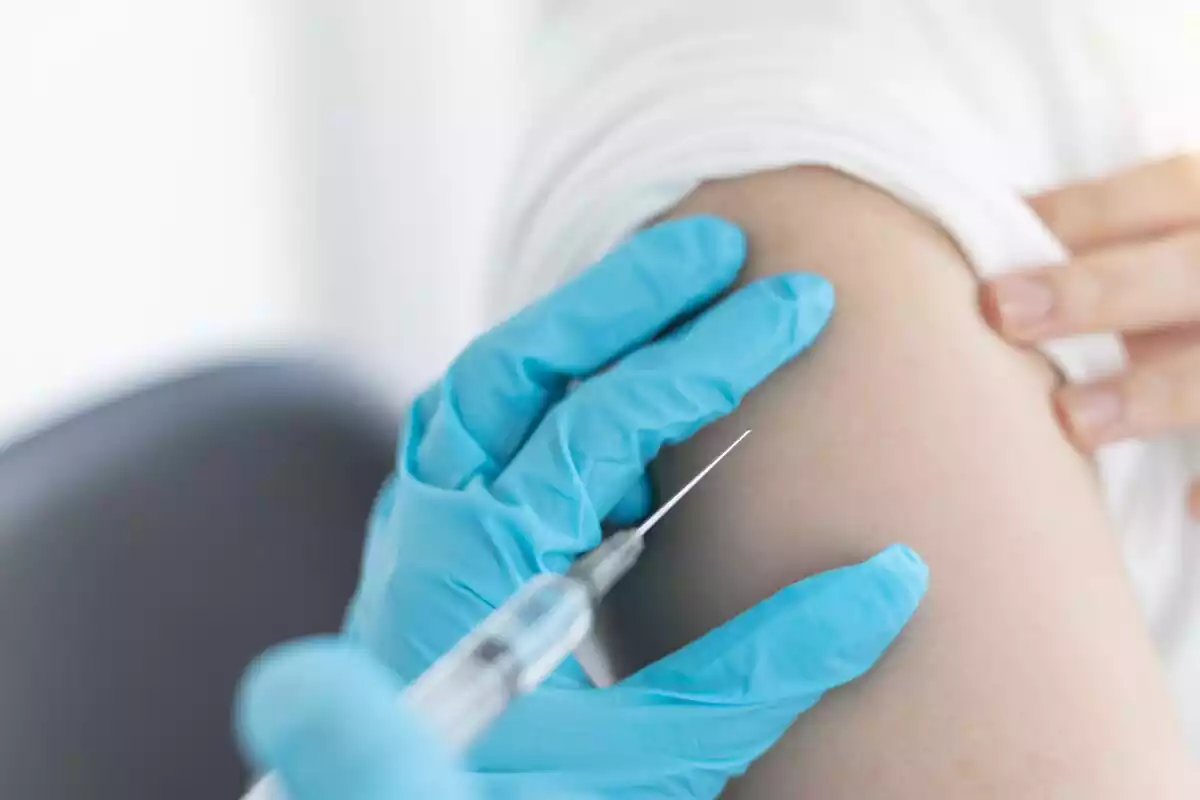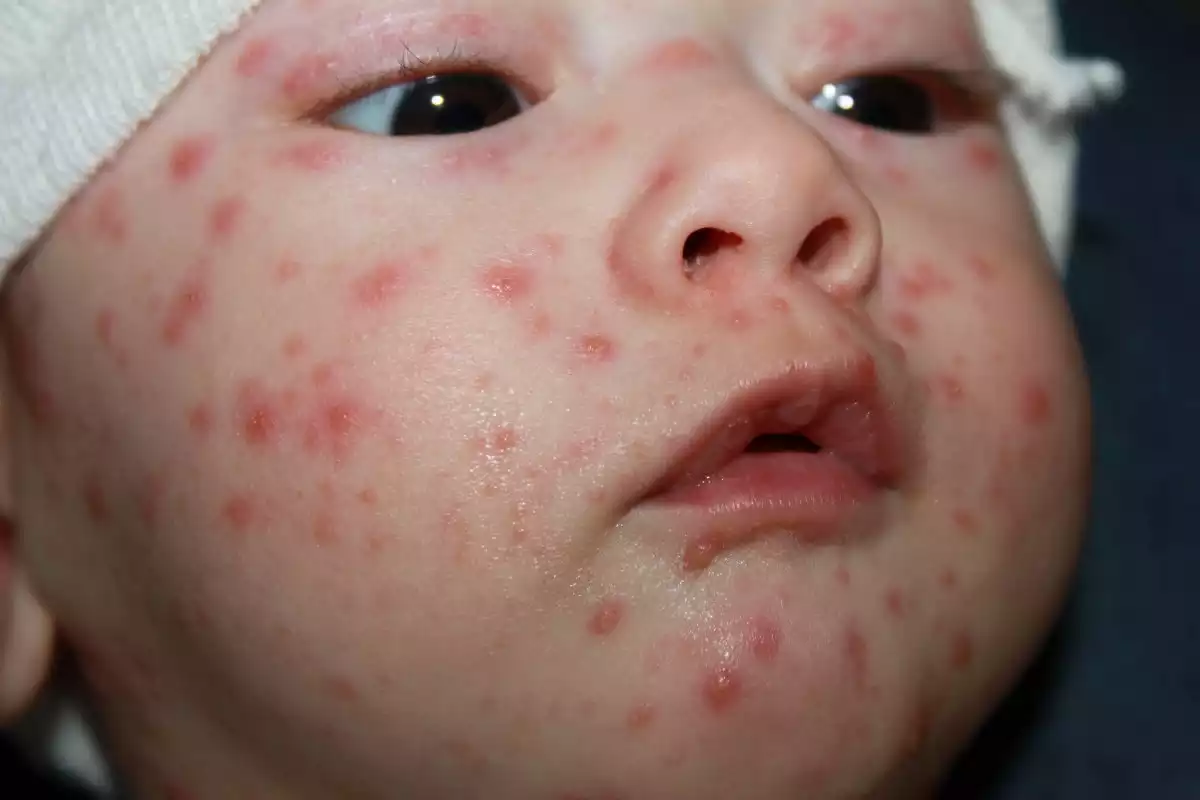Some infections and illnesses can cause annoying symptoms although they are not dangerous to health.
This is the case of chickenpox, which is known for the rashes and the terrible itching that it causes. Below we will find out what chickenpox is, its symptoms, its transmission, and the treatment, as well as some home remedies to relieve the symptoms.
What is chicken pox?
Chicken pox is a highly contagious illness. It is caused by an infection with the varicella-zoster virus (VZV). This viral infection is characterized by a very distinctive skin rash in the form of small blisters that can appear anywhere on the body and are accompanied by a very intense itching sensation.
Usually, the blisters begin to erupt in areas such as the chest, back, and face and then spread to the rest of the body. If the rash is very intense or the person scratches excessively, the blisters can hatch and become sores that can be very painful.
Chickenpox virus symptoms last from five to seven days.
Risks and management (in adults and children)
Although chickenpox symptoms do not necessarily pose a danger to health, it can lead to complications such as pneumonia, brain inflammation, or bacterial infections.
While chickenpox can affect people of all ages, it has a higher incidence in children. However, cases ofchickenpox in adults are more severe and with much more serious symptoms than in children.
To prevent the disease, the chickenpox vaccine was introduced to the global market in 1995. This led to a decrease in the number of cases of chickenpox, as well as in the severity and complications that accompany it.
In case of infection, there is a symptomatic treatment available to reduce the intensity of itching and fever. If there is a risk of complications, antiviral medication is usually administered.
Symptoms and stages
The first symptoms of chickenpox infection usually appear between 10 and 21 days after exposure to the virus, remaining for 5 to 10 days if there are no complications. People usually realize that they have varicella due to the rash, which reveals the spread of the virus.
Once the rash appears, it presents three stages. First, there is an increase in the number of pink or red protuberances, known as papules, which appear for several days.
Then small blisters or fluid-filled vesicles form from the protuberances. They last about a day and then break and leak. Broken blisters are covered with scabs that take several days to heal.
Because the protuberances may appear over several days, it is common for the person with chickenpox to experience all three stages at the same time. There are also other symptoms that may appear around two days before the rash develops. These other symptoms include:
Fever
Loss of appetite
Headache
Fatigue
Malaise
As mentioned above, chickenpox symptoms are milder in healthy children than in adults. In the most severe cases, the rash can spread to the entire body, injuring the throat, eyes, and mucous membranes (urethra, anus, and vagina).
How is chickenpox spread?
The only cause of chickenpox is the varicella-zoster virus. This virus is spread by air, so it can be easily transmitted by coughing or sneezing from a person infected with the virus.
The risk of one person spreading to others is much higher within 48 hours before the onset of symptoms, which means people are more contagious when they are not yet aware that they are infected. This risk remains constant until all skin lesions have crusted.
Another transmission route is direct contact with the blisters. People who are not immune to chickenpox can be infected if their skin touches the blisters of an infected person.
Generally speaking, people can only have symptoms of chickenpox once in their lifetime; this means that they can be infected again by the virus, but it does not usually cause any symptoms. Antibody tests can be done to determine whether or not a person is immune to chickenpox.
Risk factors
Some situations may increase the risk of getting the varicella-zoster virus. Risk factors for this disease include:
Not being vaccinated
Never have been infected
Living with children
Working in or frequently attending an elementary school or kindergarten

Treatment
In healthy people, chickenpox usually does not require specific medical treatment, so the disease develops naturally until it disappears. At most, the doctor may prescribe an antihistamine to relieve itching and paracetamol or other low-potency painkillers to decrease fever and associated symptoms.
However, people at high risk of developing complications from chickenpox, mostly adults, may be treated with antiviral medication, such as acyclovir, or intravenous immunoglobulin to shorten the duration of the infection and help decrease the risk of complications.
These medications are very effective as long as they are supplied within 24 hours of the first symptoms.
Home remedies and tips
People with chickenpox can take measures at home to relieve the symptoms of the disease and to make the condition less uncomfortable.
No scratching
It is important not to scratch the blisters even if the person feels itchy. Scratching the skin can cause scars on the blisters and increases the risk of the sores becoming infected.
When chickenpox affects children, it is helpful to cut their nails or put gloves on their hands, especially at night.
Try to relieve the itching
Instead of scratching, to ease the itching it is recommended to take cold baths with baking soda, uncooked oats, or colloidal oatmeal.
Calamine lotions also help protect and soothe skin when it is irritated. They are available in pharmacies and supermarkets.
References
Askalan, R., Laughlin, S., Mayank, S., Chan, A., MacGregor, D., Andrew, M., Curtis, R., Meaney, B. & deVeber, G. (2001). Chickenpox and stroke in childhood: a study of frequency and causation. Stroke, 32(6): 1257–62.
Parmet, S., Lynn, C. & Glass, R. M. (2004). JAMA patient page. Chickenpox. JAMA, 291(7): 906.
